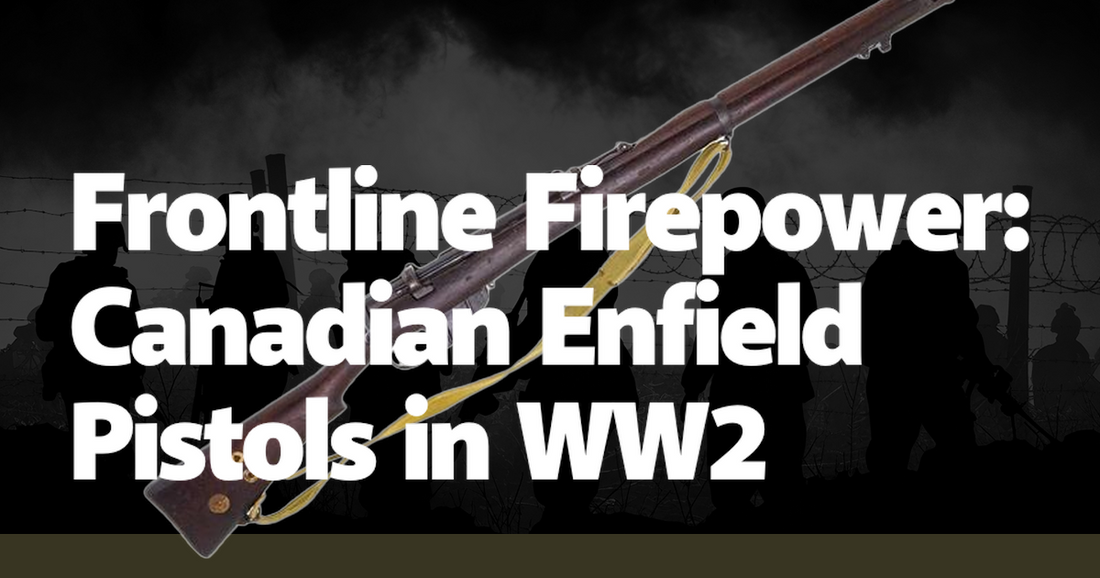In the annals of World War II, the Canadian Enfield pistols stand as a testament to the ingenuity and resilience of a nation under siege. These firearms, produced under the Lend-Lease agreement, were pivotal in arming Canadian forces, providing them with the firepower necessary to hold the line against Axis advances. The Enfield No. 2 Mk I* revolver, in particular, became a symbol of reliability and precision. Crafted with meticulous attention to detail, these pistols were a crucial component of the Commonwealth's arsenal, embodying the spirit of cooperation and shared sacrifice that defined the Allied war effort.
The Enfield No. 2 Mk I* was a double-action revolver chambered in .38/200 caliber, a round known for its stopping power and manageable recoil. This made it an ideal sidearm for both infantry and officers who needed a reliable weapon in close-quarter combat. Unlike its predecessors, the Mk I* featured a spurless hammer, designed to avoid snagging on uniforms and equipment. This seemingly minor modification had significant tactical implications, allowing soldiers to draw and fire their weapons with greater ease and speed—a crucial advantage in the heat of battle.
One of the most compelling stories of the Enfield pistol's effectiveness comes from the Battle of Ortona in December 1943. Canadian forces, engaged in brutal urban warfare against entrenched German troops, found themselves in desperate need of reliable sidearms. The Enfield No. 2 Mk I* proved invaluable in these close-quarters engagements, where the ability to quickly draw and fire could mean the difference between life and death. Sergeant Tommy Prince, one of Canada's most decorated Indigenous soldiers, famously used his Enfield to neutralize several enemy combatants in a daring solo assault, exemplifying the pistol's critical role on the front lines.
The production of these pistols was a feat of industrial prowess. Canadian factories, repurposed and retooled, churned out thousands of Enfield revolvers to meet the demands of the war. Workers, many of whom were women stepping into manufacturing roles for the first time, labored tirelessly to ensure that every pistol met stringent quality standards. This effort was not merely a matter of quantity but of quality; each Enfield revolver was a precision instrument, designed to withstand the rigors of combat and deliver consistent performance under the harshest conditions.
As the war progressed, the Enfield pistol's reputation for reliability grew. Soldiers appreciated its robust construction and straightforward maintenance, which allowed them to keep their weapons in optimal condition even in the field. The revolver's design also facilitated rapid reloading, thanks to its break-open frame and automatic ejector, which expelled spent cartridges with a single motion. This feature was particularly valued during intense firefights, where the ability to quickly reload could provide a critical edge.
The psychological impact of carrying an Enfield pistol cannot be understated. For many Canadian soldiers, the weight of the revolver on their hip was a comforting reminder of home and the industrial might supporting their efforts overseas. It symbolized not only personal protection but also the collective strength of a nation united against tyranny. This sense of connection and support was crucial in maintaining morale, especially during the grueling campaigns in Italy and Northwest Europe.
In the post-war years, the legacy of the Enfield pistols continued to resonate. Veterans often spoke fondly of their service revolvers, recounting stories of how these weapons had seen them through some of the darkest days of the conflict. The Enfield No. 2 Mk I* became a cherished memento, a tangible link to the camaraderie and courage that defined their wartime experiences. Museums and private collectors alike have sought to preserve these pistols, recognizing their historical significance and the role they played in securing Allied victory.
Today, the Canadian Enfield pistols of World War II are more than just artifacts; they are symbols of a nation's resilience and determination. They remind us of the extraordinary efforts made by ordinary people—soldiers, factory workers, and engineers—who came together to face an unprecedented global threat. The Enfield No. 2 Mk I* revolver, with its blend of practicality and precision, stands as a fitting tribute to their legacy, a testament to the enduring spirit of those who fought on the front lines of freedom.

